empowers patients with digital advancements









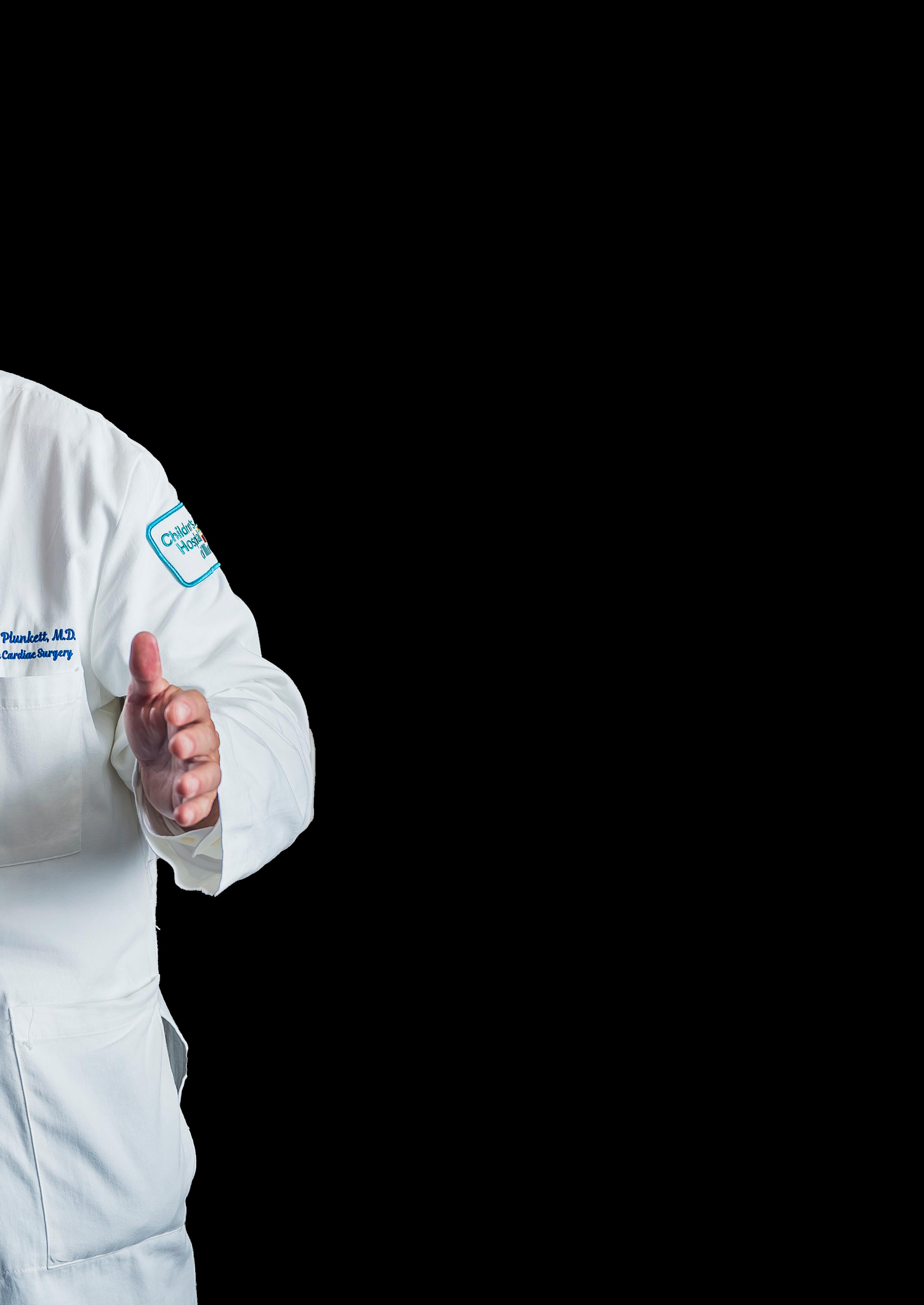
OSF HealthCare is an integrated health system owned by The Sisters of the Third Order of St. Francis. It is headquartered in Peoria, Illinois and has 15 hospitals, including 10 acute care and five critical access. There are a total of 2,084 licensed beds and 24,000 Mission Partners in over 150 locations. Roopa Foulger has worked at the Catholic healthcare organisation for 14 years.
“We are a comprehensive health system and also have a digital health arm,” she says. “Fortune Magazine has recognised us as one of the most innovative companies in the country for 2023 – this is a huge testament to what the organisation has invested in innovation.
“My role at OSF is Vice President of Digital Innovation Development. In that role, I focus on building innovative digital products for what we term Horizon 2 and Horizon 3.”
Foulger, who has a background in software engineering, is passionate about utilising data for automation and enhancing user experiences. One innovation that OSF built during the pandemic was a texting-based communication platform, which had a 520% increase in adoption from patients compared to traditional means.
“We’ve also created a data hub, which enables all of our digital health operations with 25 different sources of data. My focus is anything around adjacent and breakthrough digital innovation that supports our patients or our caregivers.”

Roopa Foulger of OSF HealthCare harnesses technological innovation to advance patient monitoring and telehealth, in partnership with Current Health
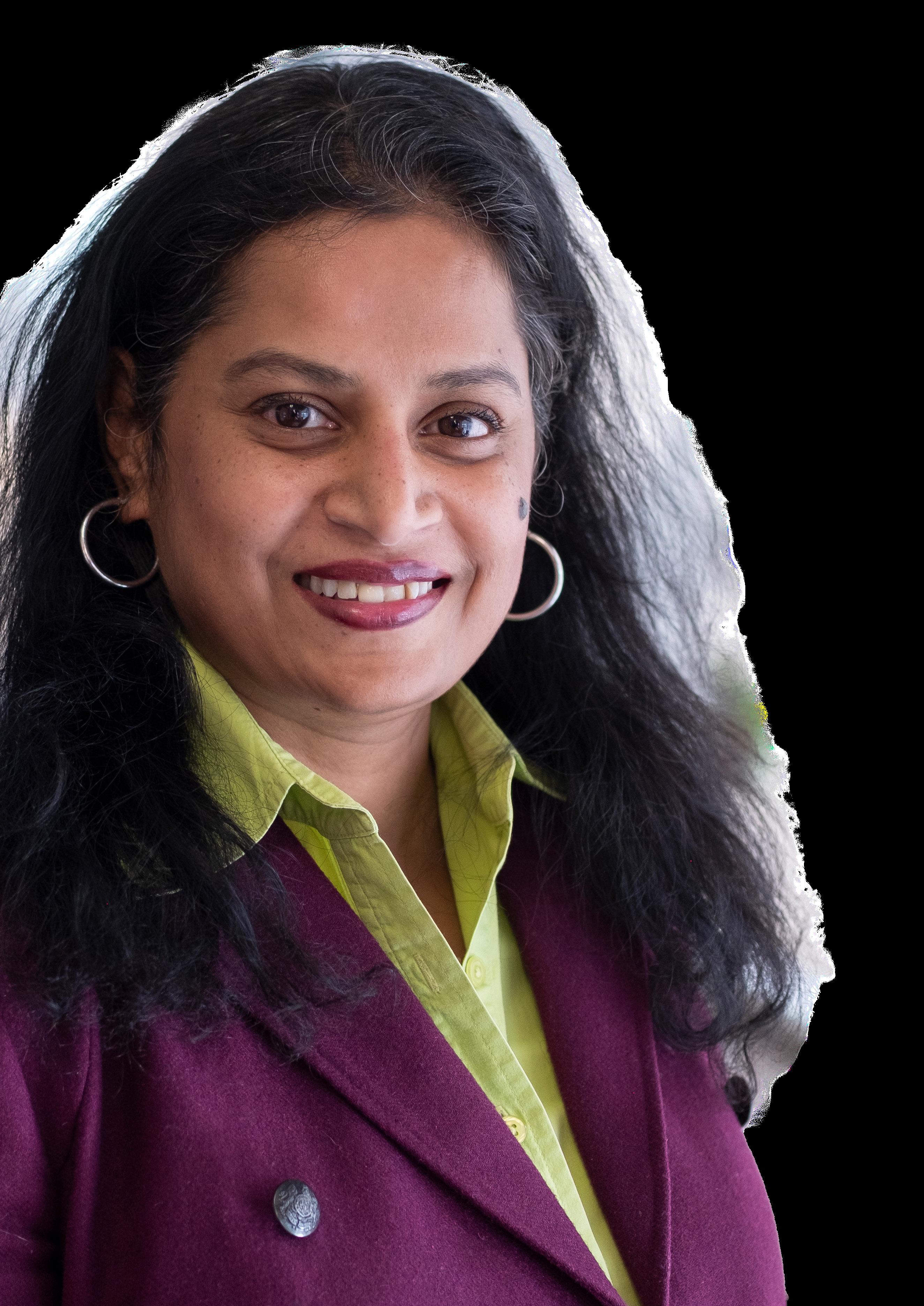
It was the desire to make an impact on people’s lives that drove Foulger to the healthcare industry.
“I enjoy enabling patients to be more connected and helping to improve their health. Also, given my background, I’m excited about using data to help reduce costs and expand services for our patients, as well as for our healthcare system. A recent study by Harvard and McKinsey showed that artificial intelligence can save healthcare industries at least US$360bn annually.

“These data points help us: classify the problems; match expertise with clinical availability; plan diagnostics and therapy for the patients; and also provide support for our clinicians at the point of care”
The intersection of technology and remote patient care Technology has always played a crucial role in achieving better care, lower costs and improved experiences. More recently, there’s been a focus on the intersection of technology and remote patient care.

TITLE: VICE PRESIDENT OF DIGITAL INNOVATION DEVELOPMENT FOR OSF HEALTHCARE
LOCATION: ILLINOIS, USA
Roopa
Foulgeris Vice President of Digital Innovation Development for OSF HealthCare. Her team develops new digital technologies to attract and guide patients through their healthcare journey. Foulger has been with OSF since 2009. With 25 years of experience in data and enterprise information management, analytics and product development, Roopa drives technology strategy for the healthcare system’s digital transformation. She also leads research at the OSF Innovation Data & Advanced Informatics Lab, building adjacent and breakthrough solutions in data science and artificial intelligence (AI). Her Lab focuses on cancer, promoting health equity and finding solutions for chronic disease conditions.
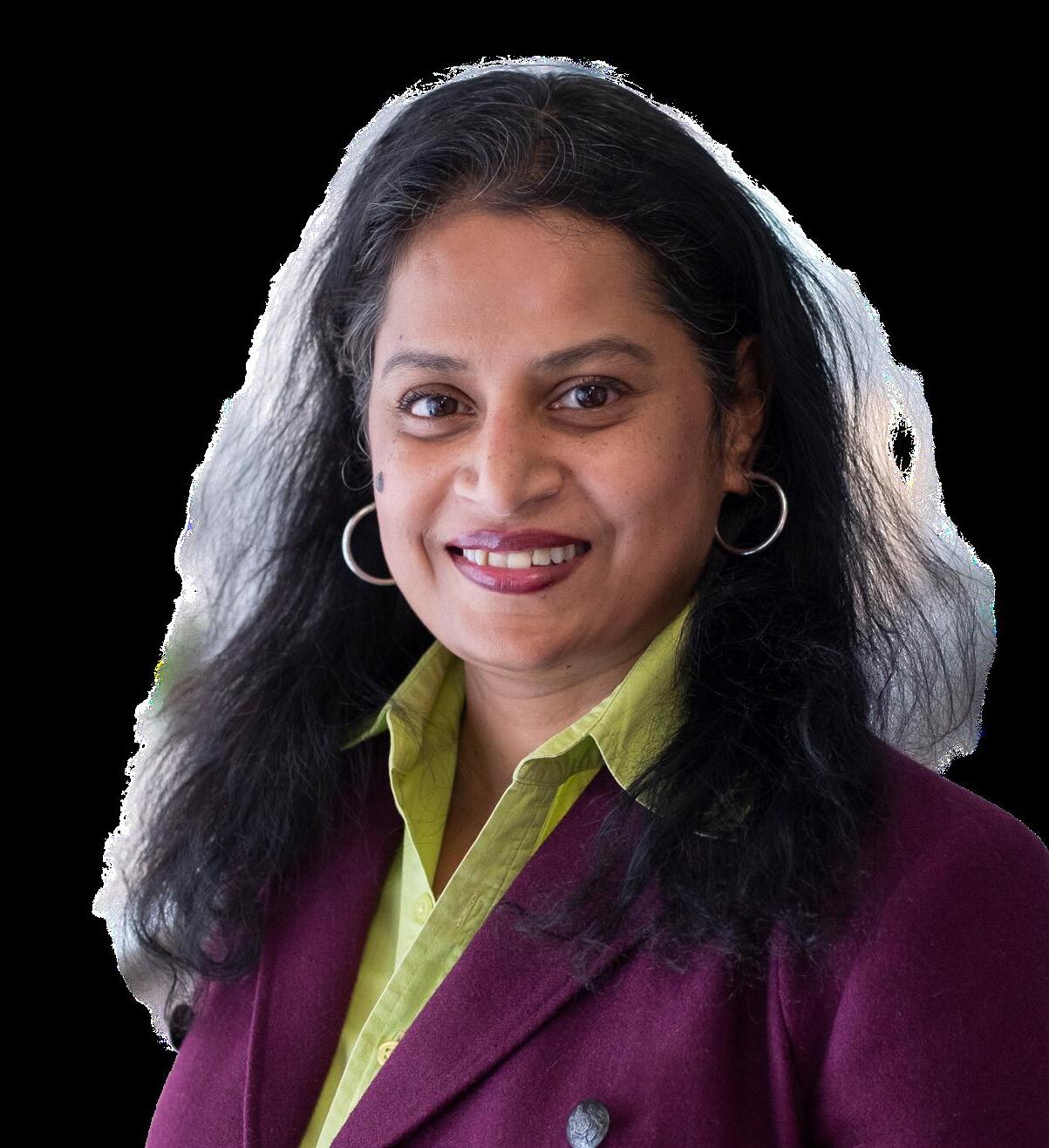
“I’m really excited to be part of a team that is enabling and creating those models to support and benefit our patients as well as our providers.”

The OSF OnCall Advanced Care program is led by a multi-disciplinary team dedicated to providing in-home disease management for patients with complex conditions.
The team relies on Current Health’s platform to assess patients’ health needs, manage their care and provide education and support– all in the comfort of patients’ own homes.
1. Connected devices for broad data capture
Combine data from remote patient monitoring devices with patient-reported symptoms to provide a holistic look into health at home.
2. Patient communication and human touch
Asynchronous messaging and video calls allow for ongoing connection and deeper insights into patient wellbeing.
3. Risk identification
Identify when a patient needs clinical attention through configurable clinical pathways and clinical alarm algorithms tailored to the individual or population.
4. EHR Integration
Integrate with leading EHR systems to simplify workflows and a create a single picture of patient health.
5. Comprehensive support
Get programs up and running quickly with robust services for patient kit logistics, 24/7 technology support, and clinical monitoring.
~400 patient census
Spend index decreased from 1 to .71 pre vs. post enrollment
95.7% of patients would recommend the service to others
Multiple clinical pathways, including asthma, diabetes, CHF and COPD
“Through the Current Health platform, we’re able to track the clinical data points that are relevant for each patient and see how their condition is improving or deteriorating from day to day.”
Beth Wharton, Manager of Virtual Care Operations for OSF OnCall
Current Health, from Best Buy Health, provides an enterprise care-at-home platform that enables healthcare organizations to design, launch, and scale safe and effective programs to deliver care outside of the four walls for a hospital by providing the technology backbone as well as end-to-end support services.
LEARN MORE
“We have our digital-first strategy with human connection,” Foulger says. “It’s not just technology, as there’s always a human at the other end that the patient can connect to. Our remote patient monitoring platforms for proactive and personalised support are one intersection of how technology supports the healthcare sector.”
From a digital perspective, OSF focuses on swiftly responding to community needs with virtual care. The company uses trained community health workers that are digitally enabled.

“We call them digital health navigators, who help in expanding access to our underserved populations, such as those in rural areas. We implement remote patient monitoring programmes for specific conditions swiftly.”

“Our remote patient monitoring platforms for proactive and personalised support are one intersection of how technology supports the healthcare sector”
ROOPA FOULGER VICE PRESIDENT OF DIGITAL INNOVATION DEVELOPMENT FOR OSF HEALTHCARE, OSF HEALTHCARE
Last year, there was an outbreak of RSV in young children and babies, yet it took OSF less than a week to support the parents and the babies remotely with monitoring and the ability to escalate to video visit if necessary.
Another group of patients is benefitting from a remote patient monitoring (RPM) programme that is providing support for some women in between medical appointments.
“We added 24/7 RPM and communications for our pregnancy and postpartum patients. Medicaid patients are the most vulnerable in terms of access to and quality of care. We added that last year in August and we’ve seen nearly 1,500 patients enrolled.”
OSF has been expanding some of these programmes in communities where other hospital systems have decided to suspend services. In addition, the non-profit healthcare organisation is utilising real-time patient data in multiple ways.
“It’s a valuable indicator for intervention and decision making for our providers. We also use the real-time data to enhance our AI model, with the end goal to improve patient outcomes and enhance care quality for our patients.”
One of the things that patient data can be used for is patient records, as Foulger explains: “Over the years, we’ve built a comprehensive set of longitudinal data around our patients. These patient health records look at the continuum of what care
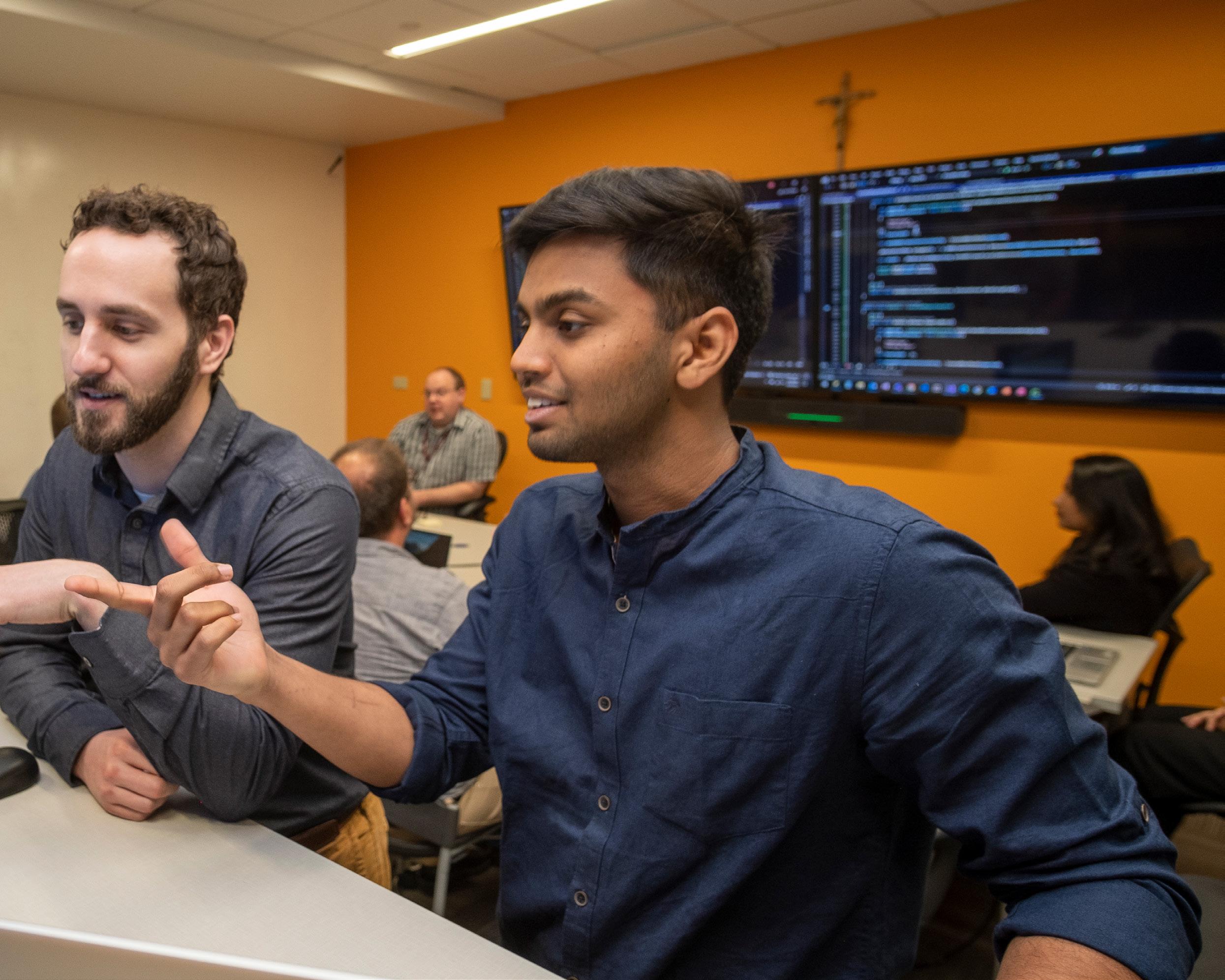
the patient has received since they arrived at our premises.”
This helps the team at OSF see patterns and gain insights about who is at risk, for example, of hospital readmissions, based on their health history and their choices.
“These data points help us: classify the problems; match expertise with clinical availability; plan diagnostics and therapy for the patients; and also provide support for our clinicians at the point of care,” Foulger explains. “The fact that we’ve built this data over time also helps us understand how we can personalise care for our patients and provide assistance. We’ve also built a number of algorithms that help us with risk identification.”
OSF OnCall, the system’s digital health arm, offers telehealth and digital tools that support patient engagement to promote better individual and community health. In rural communities, where it is challenging to hire and keep specialists, OSF OnCall offers remote monitoring for ICUs and telehospitalists.
“We have a hospital-at-home programme, it’s a digital hospital. We also have a chat bot that was developed early during COVID-19 for care, which is used to help triage patients. The patients who are digitally savvy can use it to direct them to the point of care,” says Foulger.
OSF also has a nurse hotline that serves a similar purpose.
OSF leverages technology that gives the healthcare organisation the opportunity to connect with patients through educational microsites, text alerts and two-way text messages as well as phone calls for appointments and screening reminders. Data identifies patients who have missed

“I’m excited to be part of a team that is enabling models to benefit our patients and providers”
ROOPA FOULGER VICE PRESIDENT OF DIGITAL INNOVATION DEVELOPMENT FOR OSF HEALTHCARE, OSF HEALTHCARE
appointments or are likely to miss appointments and provides opportunities to get re-connected with important care.
“We ask if they need any support in making sure they’re able to reach those appointments,” Foulger says. “We have so many different channels to reach out to our patients. We’ve seen a 520% increase in the response rate from our patients using different means and how we connect with them. We’ve also seen increased responses in some of the screening metrics for Medicaid patients.”
As Foulger asserts, Medicaid patients are often the most vulnerable: “In terms of
getting access to care, we’ve doubled our mammogram rates of patient compliance since we’ve used digital means to connect with them, communicate and engage.”
Increased accessibility has also enhanced the patient experience at OSF. The two-way targeted communication allows the organisation to help patients know their health challenges and become more engaged in their own care.

“With this technology solution, there’s always another person at the end that they can connect to if they need support,” said Foulger.


Current Health is allowing OSF to safely monitor and care for more patients – with a wider range of conditions –at home, outside of a hospital setting. Founded in 2015 and headquartered in Boston, Current Health (a Best Buy Health Company) offers an enterprise care-at-home platform to enable healthcare organisations to offer the best patient-centric care. The Current Health platform unites remote patient monitoring, telehealth capabilities and patient engagement tools.
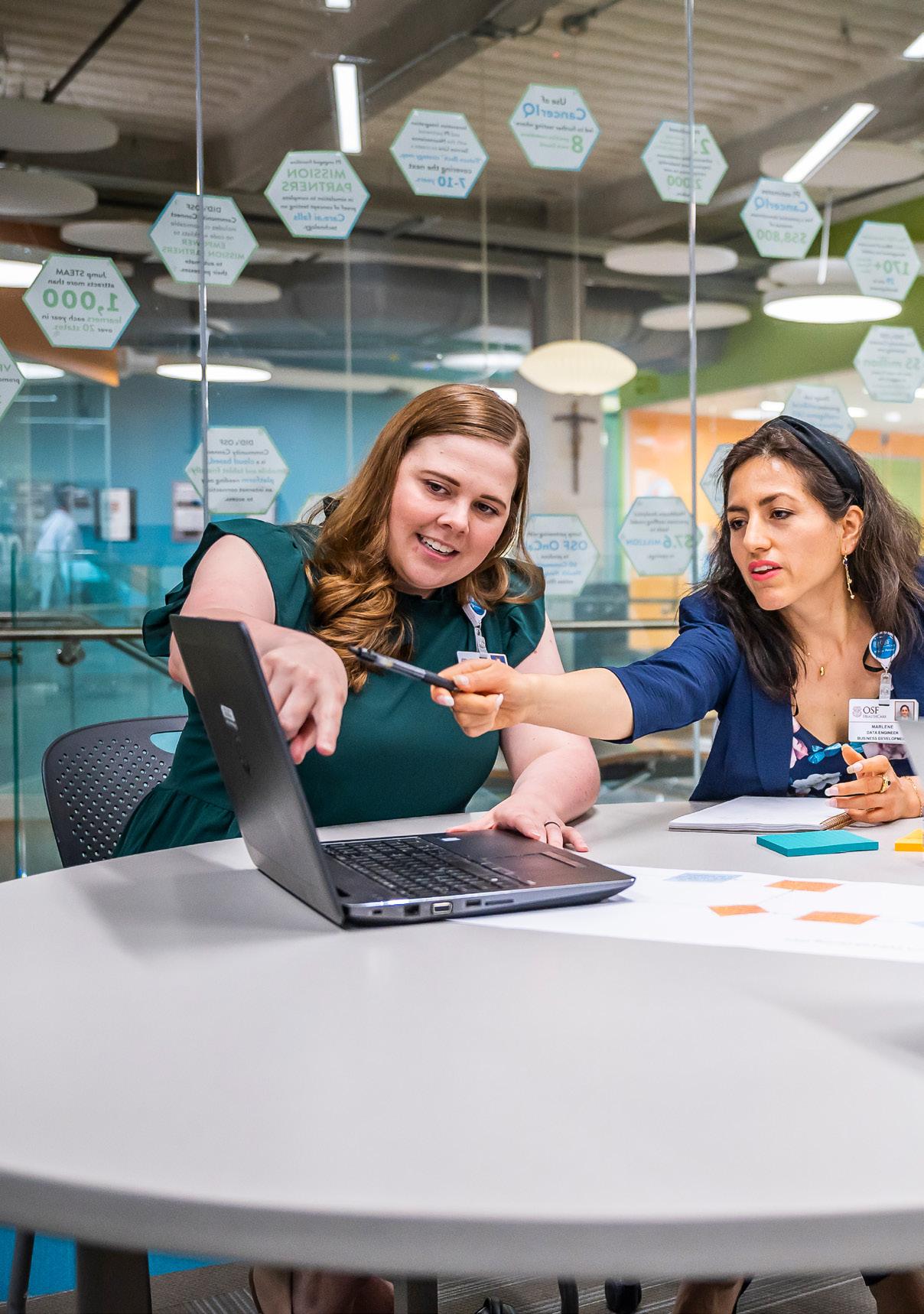

Foulger explains, “We have a chronic high-risk, advanced care-at-home service, supported through Current Health digital’s platform. Patients receive pulse oximeters, blood pressure cuffs and glucose monitors, which are seamlessly integrated through bluetooth connection. The captured data gets recorded in the electronic patient health records and care plans at OSF, which, in turn, are monitored 24/7 by our clinicians.” As a result of real-time monitoring and data, OSF clinicians are able to intervene when they see something that is out of range. They can then connect to the patient via video technology which is integrated within the Current Health platform. According to Foulger, the core ingredient to a successful partnership is ensuring that you partner with someone who understands key needs.
“As a healthcare system, we need a configurable digital platform that caters to both our patients and us. Therefore, it is important that our partners listen to our voice to ensure the technology works seamlessly for patients and clinicians. I think the feedback that our staff has provided is fine-tuning the solution and
that has been one of the key ingredients in the success.”
Over the next 12 months at OSF, the team is looking to continue on its Horizon 2 and Horizon 3 capabilities.
“We have a number of partnerships with startups,” says Foulger. “Current Health, for example, was a startup. We first invested with them and now we are implementing their technology.
“We also have relationships with a number of universities that we tap into to source young talent. Through that, we are looking to continue our journey in the AI space; that is, especially in the generative AI area – one such position that we are focusing on is how we can help automate how our clinicians’ work.”
Globally, healthcare workers are facing mass burnout. At OSF, leaders are dedicated to improving the workload so employees have the time and energy needed to give their patients the treatment they deserve.

“We want to use technology to reduce the burden. We’ve already started building some solutions in partnership with universities or with startups and we now want to deploy them – using automation, personalised medicine and AI.”

“It’s not just technology, there’s always a human at the other end that the patient can connect to”
ROOPA FOULGER VICE PRESIDENT OF DIGITAL INNOVATION DEVELOPMENT FOR OSF HEALTHCARE, OSF HEALTHCARE
POWERED BY:

